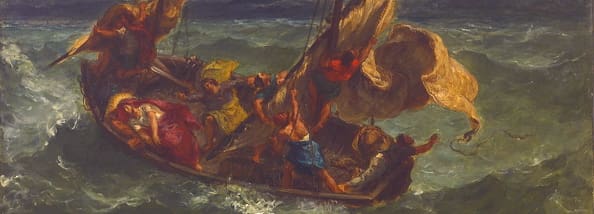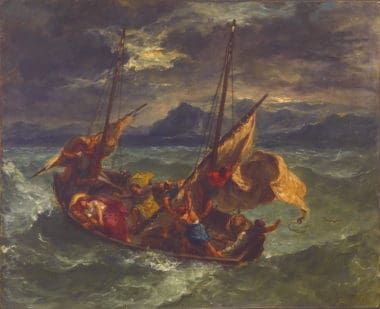Editor’s Note: This is Part II of the Mysticism and Magisterium Series. You can find Part I here.
Christ Yesterday, Today and Forever
Jesus Christ is the Lord of history because His is the last say. The Last Judgment is also the last word. But our Savior is Lord of history also for another reason. Christ is present in the world and particularly in the Church at every historical moment through the mystery of His divine providence. In the here and now, He remains faithful to his promise that He will not leave us orphans (cf. John 14:18).
Indeed, the providence of God is manifested through His only begotten Son’s abiding presence in the details of history. Though God did not will that man should suffer, and He certainly never wills our sins, He so orders the causes of history that, as St. Paul writes, everything God works for good with those who love him, who are called according to his purpose (Rom 8:28). This is the reason why the deicide of the cross becomes the victory of the resurrection. Christ is the Lord of history in the concrete present.
Of course, it does not always seem this way, especially when the Bark of Peter, the Church, is tossed on the waves of tribulation by forces that threaten to destroy her. It is ever harder to see the providence of God at work when sometimes the Church herself seems to be the cause the ordeal. Flannery O’Connor wrote that only the Church can make the times in which we live endurable and that only thing that makes the Church endurable is that “it is somehow the body of Christ and that on this we are fed.” She continued:
It seems to be a fact that you have to suffer as much from the Church as for it but if you believe in the divinity of Christ, you have to cherish the world at the same time that you struggle to endure it. (Flannery O’Connor)
The only reason why the Church has survived the forces of history is because of the presence of Christ. This is the guarantee of the Incarnation. Somehow, God remains present in the concrete historical circumstances of every here and now precisely because the Church is the Body of Christ and is never separated from its Head.
We know that the Church is holy because of her unaltered doctrine, her sacraments, especially the Most Holy Eucharist, and because of the saints. These make the Church holy even in the darkest times. But aside from this holiness, the Holy Spirit continues to move the Church through the difficulties presented by every age.
In his encyclical Lumen Fidei (LF), Pope Francis says that faith is a supernatural gift that lights our way, guiding us through time. It comes from the past as a “foundational memory,” of the words and deeds of Christ. Yet, because faith proceeds from the Risen Christ it is also a light that comes from the future (LF, paragraph 4). For this reason, Pope Francis calls faith memoria futuri, “remembrance of the future” (LF, 9). But both the past and future are rooted in the truth of the Incarnation, which continues in the present through the Church. Thus, the present is endurable through the Church, and the Church is made endurable through the presence of Christ.
And this is why, in spite of ecclesiastical scandals and shortcomings–in spite of a very human side that has no guarantee of infallibility–the Church remains the Ark of God that carries us over the flood of historical uncertainty. Thus, it is important to remember that our faith in the Church is never faith in any mere man, but faith in Christ, and why thinking with the Church remains important even if it seems that sometimes we suffer more because of the Church than for her.
This faith is proclaimed every Easter when the light of the paschal fire cuts through the darkness of our hearts and minds:
“Christ yesterday and today, the beginning and the end, Alpha and Omega, all time belongs to him, and all ages; to him be glory and power, through every age and for ever. Amen.”
Editor’s Note: A listing of all the posts in the “Mysticism and Magisterium” Series can be found here.
+
Art for this post on Christ Yesterday, Today and Forever: Christ on the Sea of Galilee, Eugène Delacroix, 1854, PD-US author’s life plus 100 years or less, PD-Worldwide, Wikimedia Commons.



